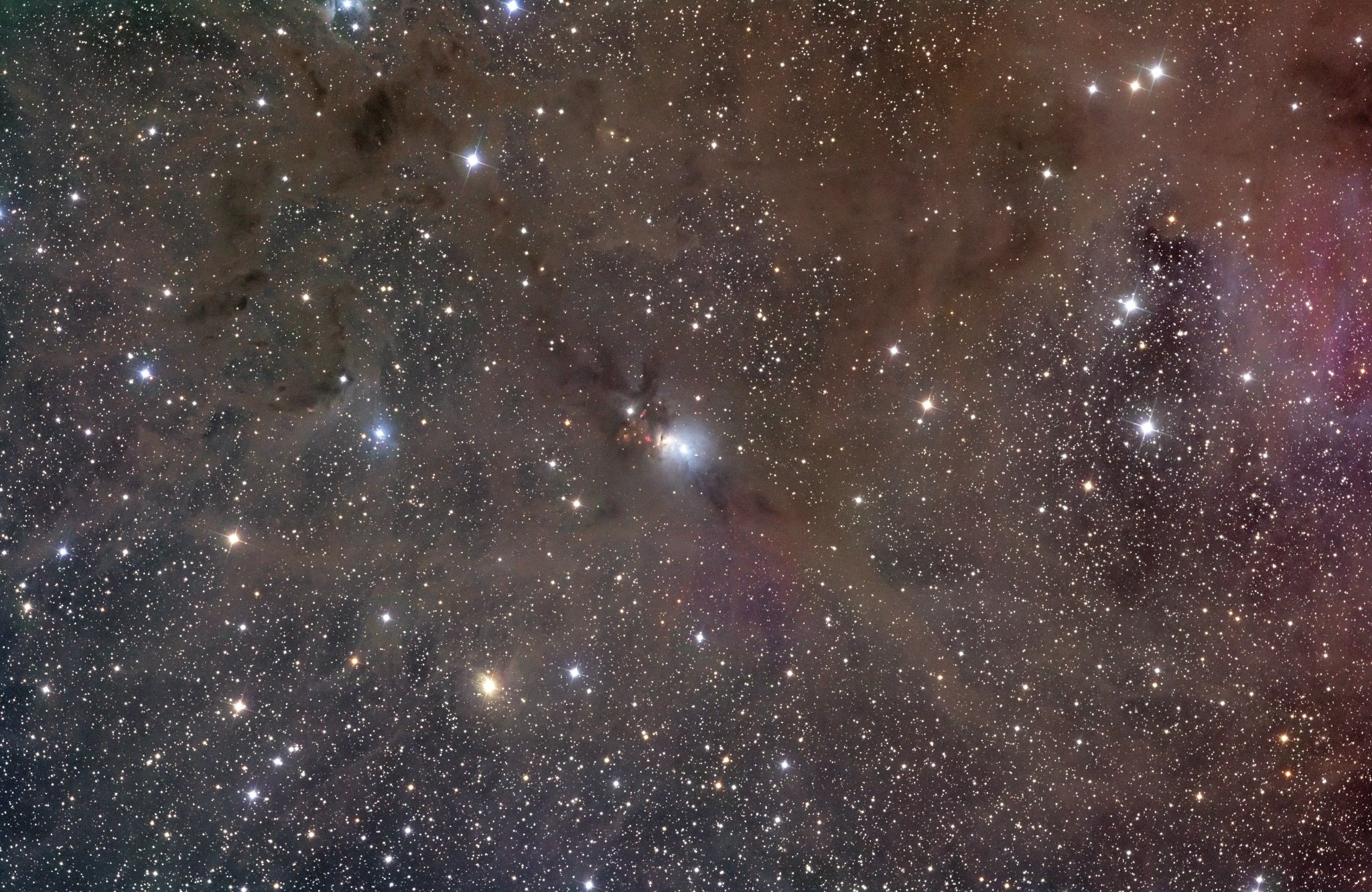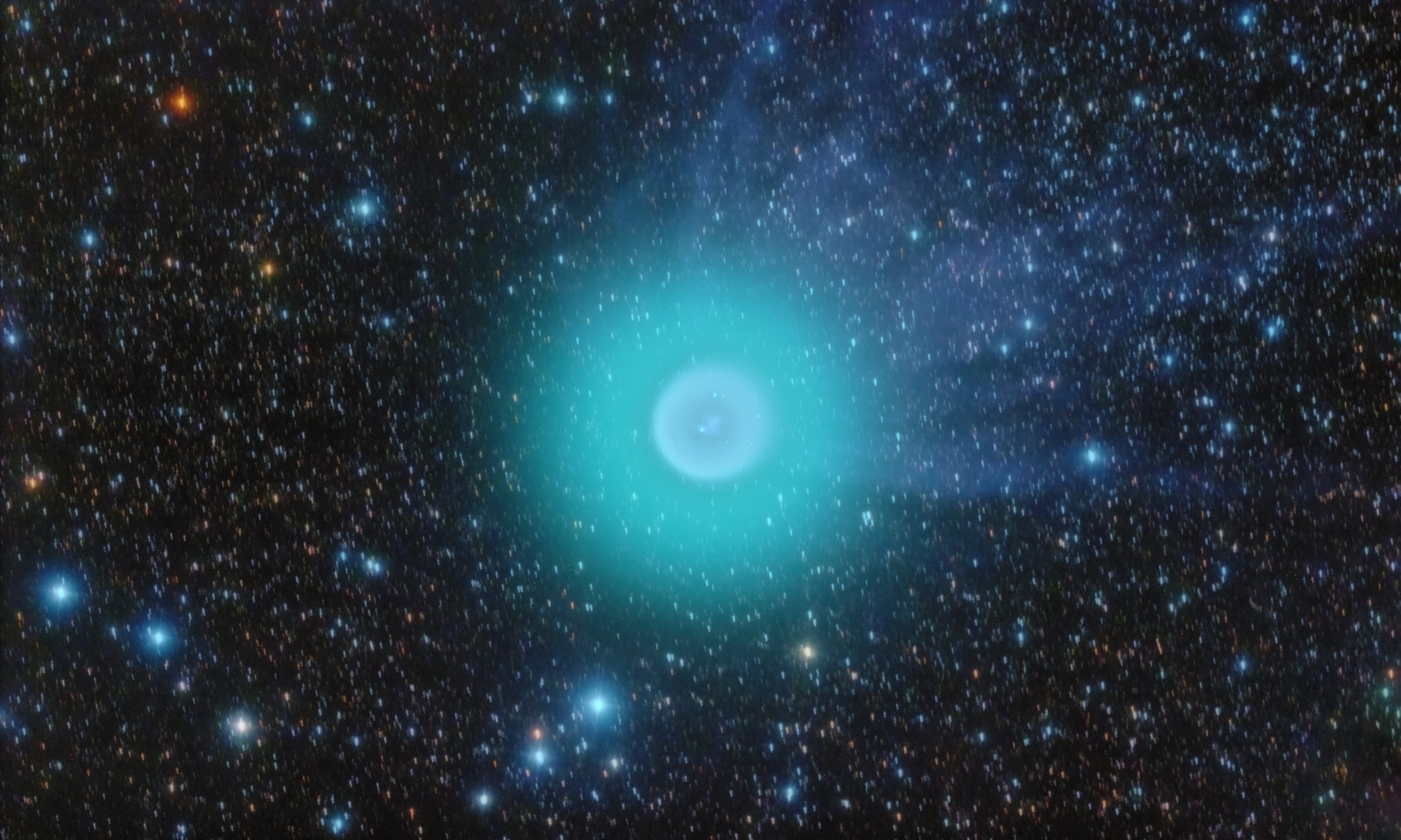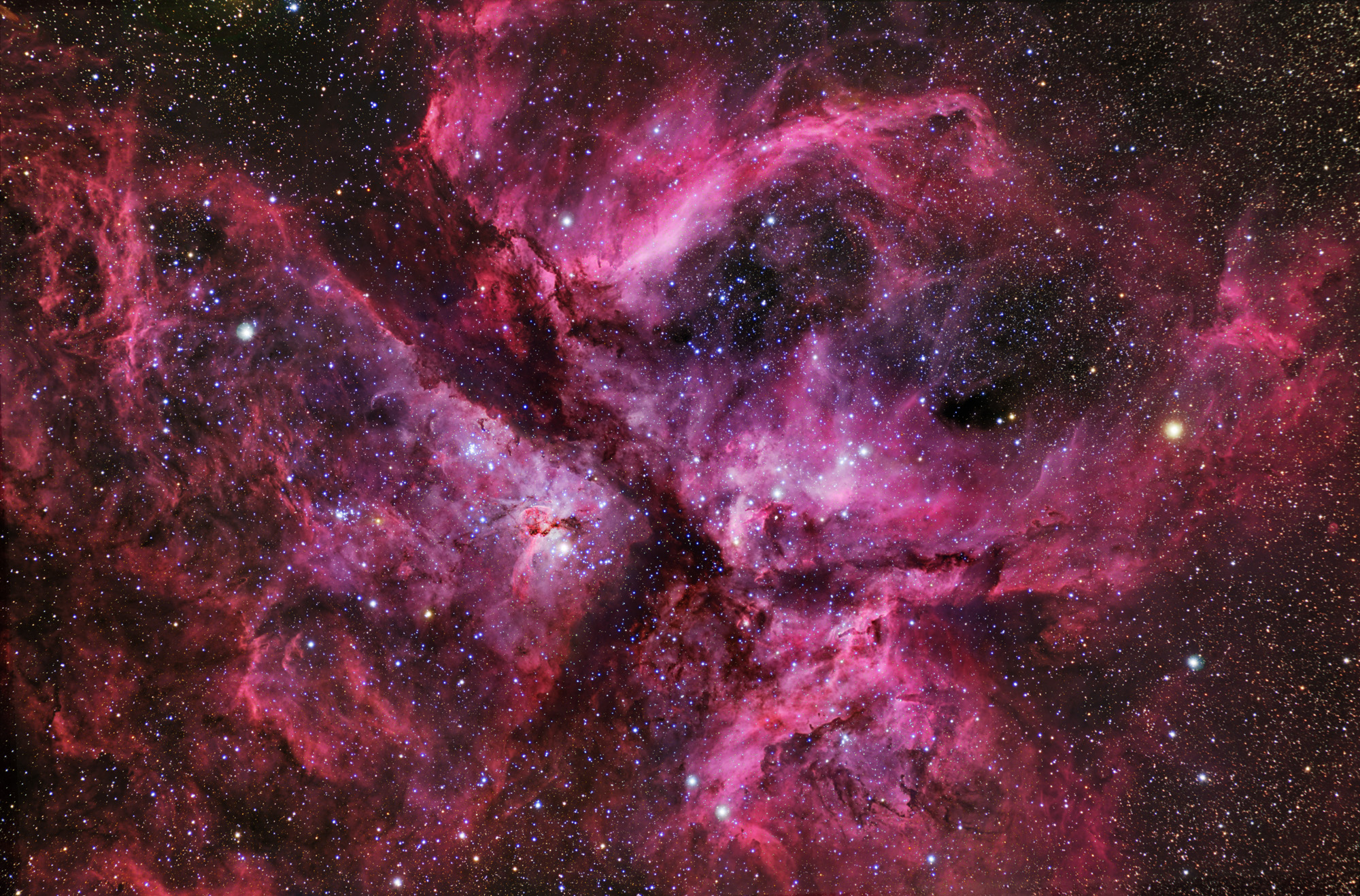 In the constellation Perseus, this cloud of dust covers nearly 4 degrees on the sky. NGC 1333 is in the center of the picture, colored a dusty blue. It rests some 1,000 light-years away. At that distance, the field of view is estimated to be 70 light-years across, a truly massive distance. Several dark dust nebulae as well as the reddish glow of Hydrogen gas can be seen on the outskirts of the dust cloud.
In the constellation Perseus, this cloud of dust covers nearly 4 degrees on the sky. NGC 1333 is in the center of the picture, colored a dusty blue. It rests some 1,000 light-years away. At that distance, the field of view is estimated to be 70 light-years across, a truly massive distance. Several dark dust nebulae as well as the reddish glow of Hydrogen gas can be seen on the outskirts of the dust cloud.Friday, November 30, 2007
2.6 Stardust in Perseus
 In the constellation Perseus, this cloud of dust covers nearly 4 degrees on the sky. NGC 1333 is in the center of the picture, colored a dusty blue. It rests some 1,000 light-years away. At that distance, the field of view is estimated to be 70 light-years across, a truly massive distance. Several dark dust nebulae as well as the reddish glow of Hydrogen gas can be seen on the outskirts of the dust cloud.
In the constellation Perseus, this cloud of dust covers nearly 4 degrees on the sky. NGC 1333 is in the center of the picture, colored a dusty blue. It rests some 1,000 light-years away. At that distance, the field of view is estimated to be 70 light-years across, a truly massive distance. Several dark dust nebulae as well as the reddish glow of Hydrogen gas can be seen on the outskirts of the dust cloud.Friday, November 16, 2007
2.5 The Crescent Nebula

The Crescent Nebula was created by the brightest star in its center and began forming nearly 250,000 years ago. The central star is a Wolf-Rayet star that sheds its outer envelope and ejects the equivalent mass of our Sun every 10,000 years. It is nearly 4,700 light-years in the constellation Cygnus. The central star will likely undergo a supernova explosion in the next million years.
Friday, November 9, 2007
2.4 Observation Log
Date: November 6, 2007
Time: 7:00-9:00
Location:270 15' 41.46" N, 820 24' 48.71" W; Field behind Suncoast Community church on Hawkins Road
Sky Conditions: Very clear. Some light pollution.
Instruments: Binoculars, Telescope
Planets: Jupiter
Bright Stars Noted: Altair, Vega, Deneb, Arcturus, Fomalhaut, Aldebaran
Constellations Noted: Sagittarius, Ophiuchus, Aquila, Lyra, Capricornus, Cygnus, Cassiopeia, Cepheus, Andromeda, Hercules, Perseus, Scorpius, Sagitta, Delphinus, Scutum, Pegasus
Binary Stars: Epsilon Lyrae, Gamma Andromeda, Polaris, Alpha Capricorn
Deep Sky Objects: M57, M45, Hyades, M27
Other: Comet Holmes
Time: 7:00-9:00
Location:270 15' 41.46" N, 820 24' 48.71" W; Field behind Suncoast Community church on Hawkins Road
Sky Conditions: Very clear. Some light pollution.
Instruments: Binoculars, Telescope
Planets: Jupiter
Bright Stars Noted: Altair, Vega, Deneb, Arcturus, Fomalhaut, Aldebaran
Constellations Noted: Sagittarius, Ophiuchus, Aquila, Lyra, Capricornus, Cygnus, Cassiopeia, Cepheus, Andromeda, Hercules, Perseus, Scorpius, Sagitta, Delphinus, Scutum, Pegasus
Binary Stars: Epsilon Lyrae, Gamma Andromeda, Polaris, Alpha Capricorn
Deep Sky Objects: M57, M45, Hyades, M27
Other: Comet Holmes
2.3 Comet Holmes Grows a Tail

Comet Holmes, able to be seen with the naked eye, has only recently grown a tail. Over the past week, many astronomers have noticed that the comet's coma has taken a slightly green hue. The comet's tail is made by the solar wind impacting the ions in the comet's coma, which pushes them away from the Sun.
Friday, November 2, 2007
2.2 The Great Carina Nebula
 The Carina Nebula, or NGC 3372, is one of our galaxy's largest star forming regions. It is easily visible to the naked eye although it is nearly 7,500 light-years away. This reveals the region's glowing filaments of interstellar gas and dark cosmic dust clouds. It is home to some extremely massive stars, such Eta Carinae, which is nearly 100 times larger in mass than the Sun.
The Carina Nebula, or NGC 3372, is one of our galaxy's largest star forming regions. It is easily visible to the naked eye although it is nearly 7,500 light-years away. This reveals the region's glowing filaments of interstellar gas and dark cosmic dust clouds. It is home to some extremely massive stars, such Eta Carinae, which is nearly 100 times larger in mass than the Sun.
Subscribe to:
Posts (Atom)